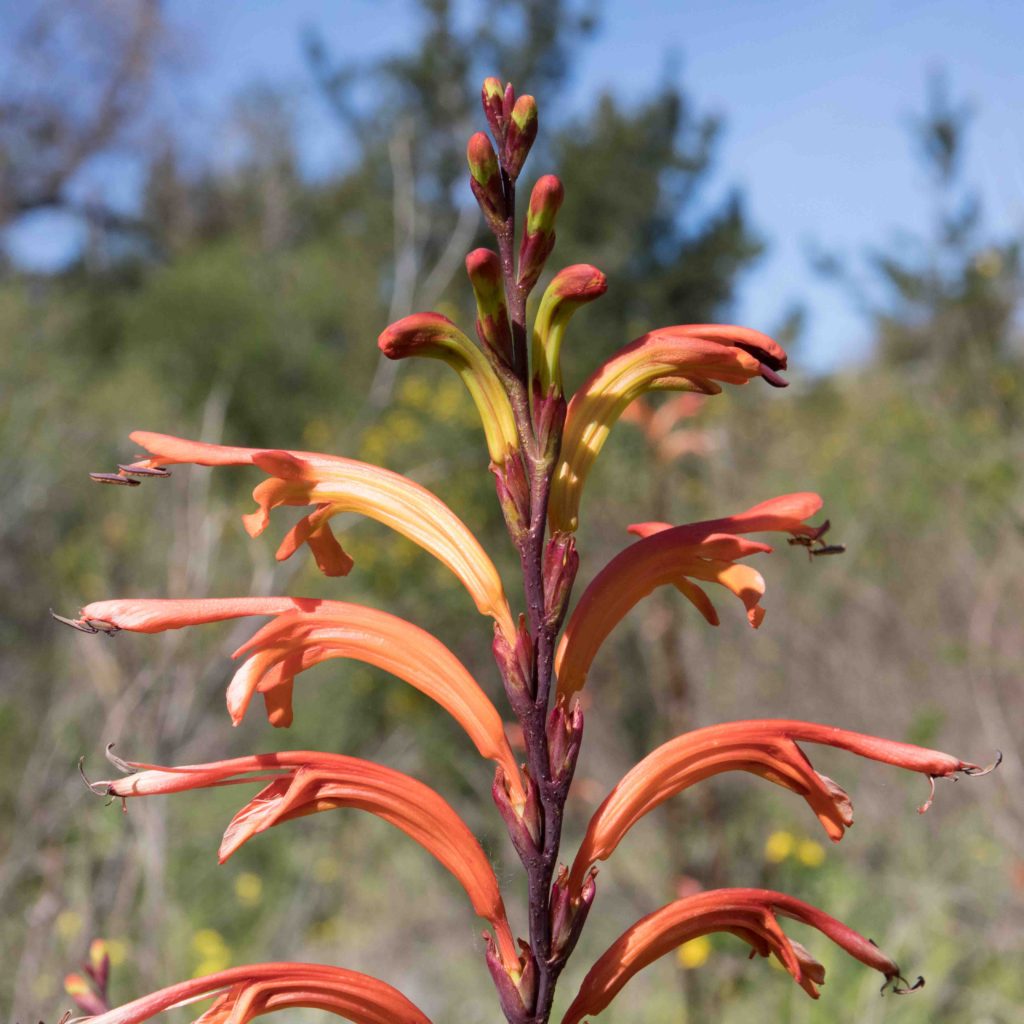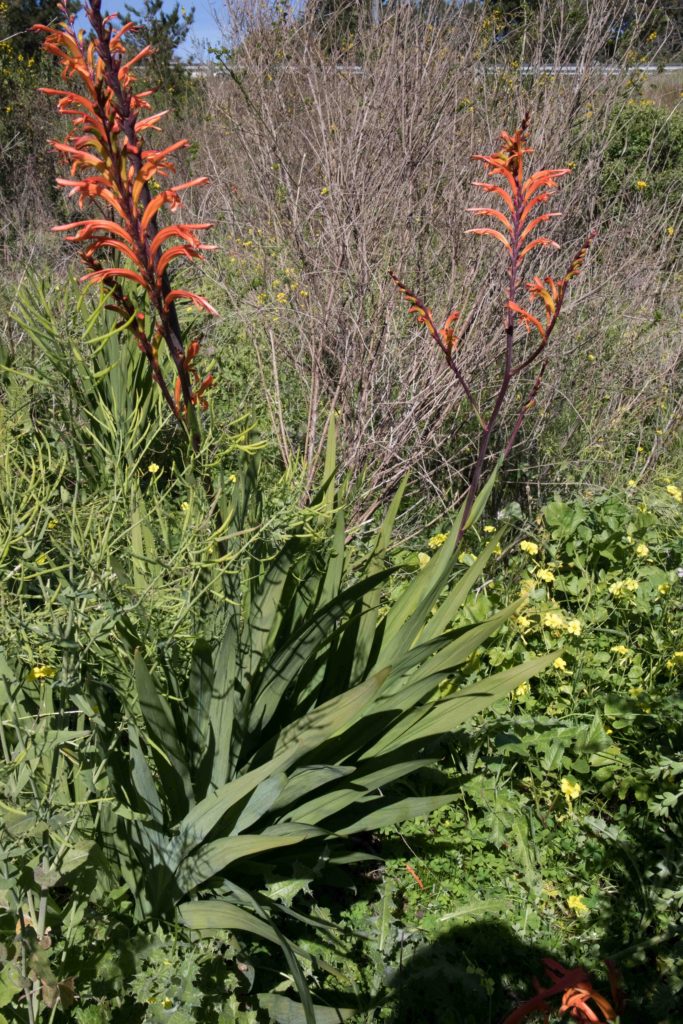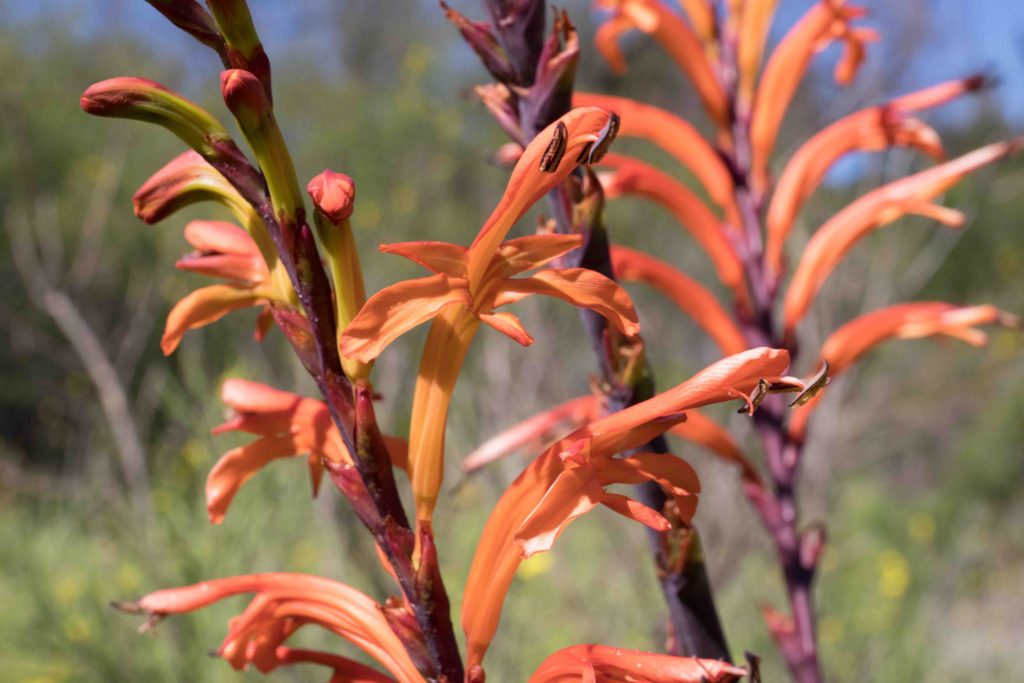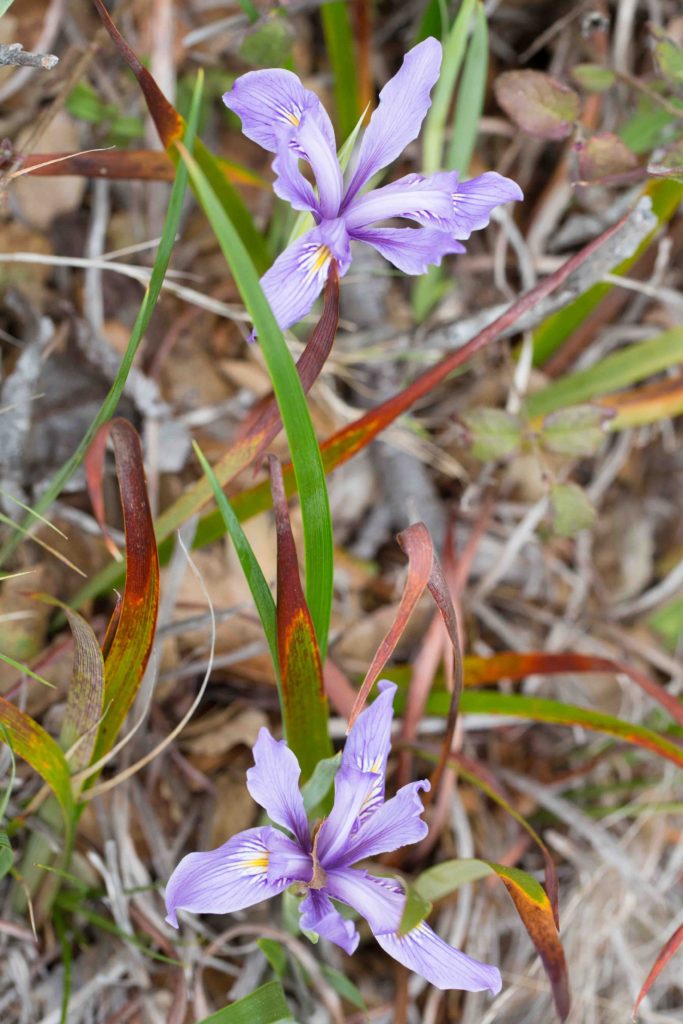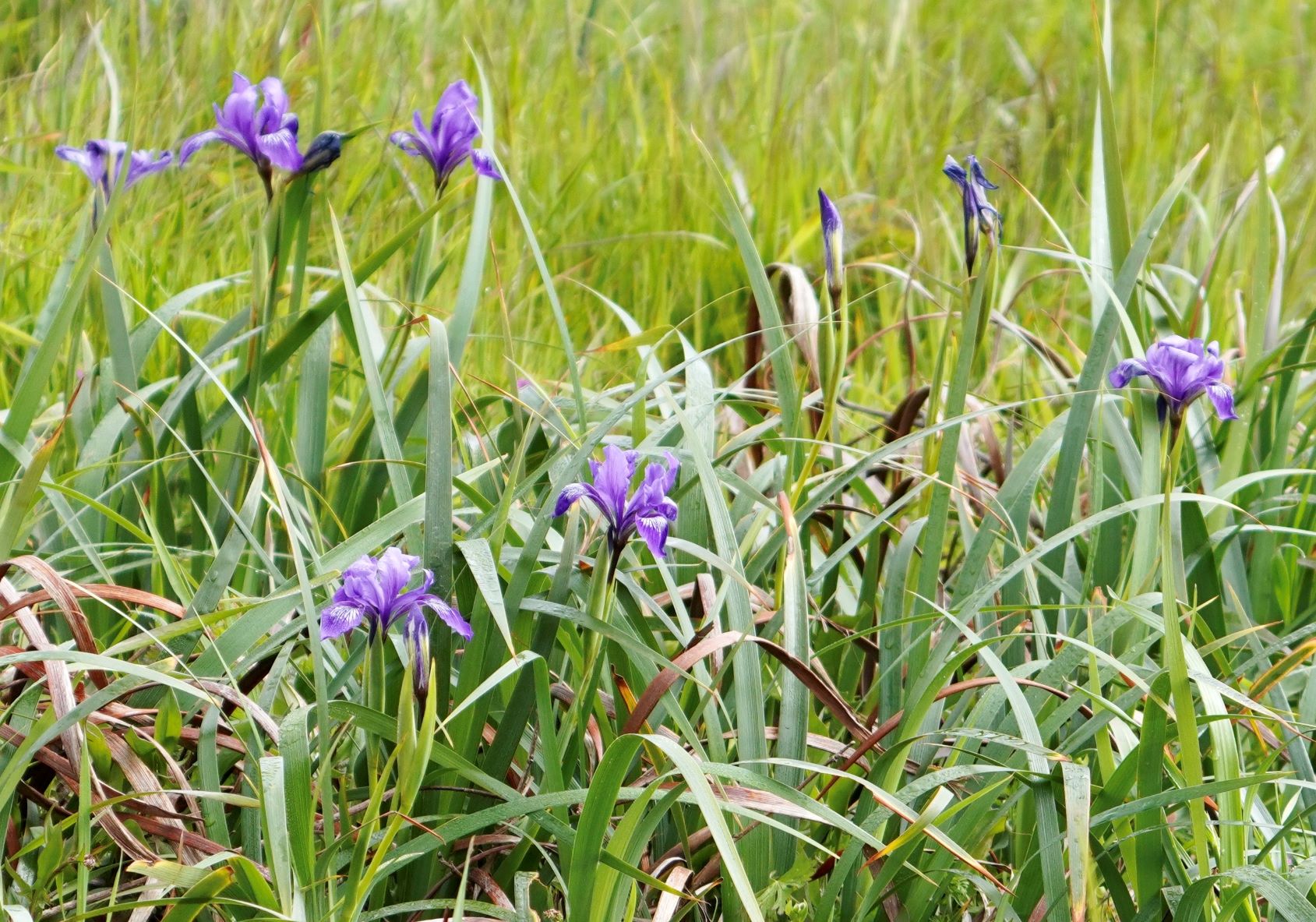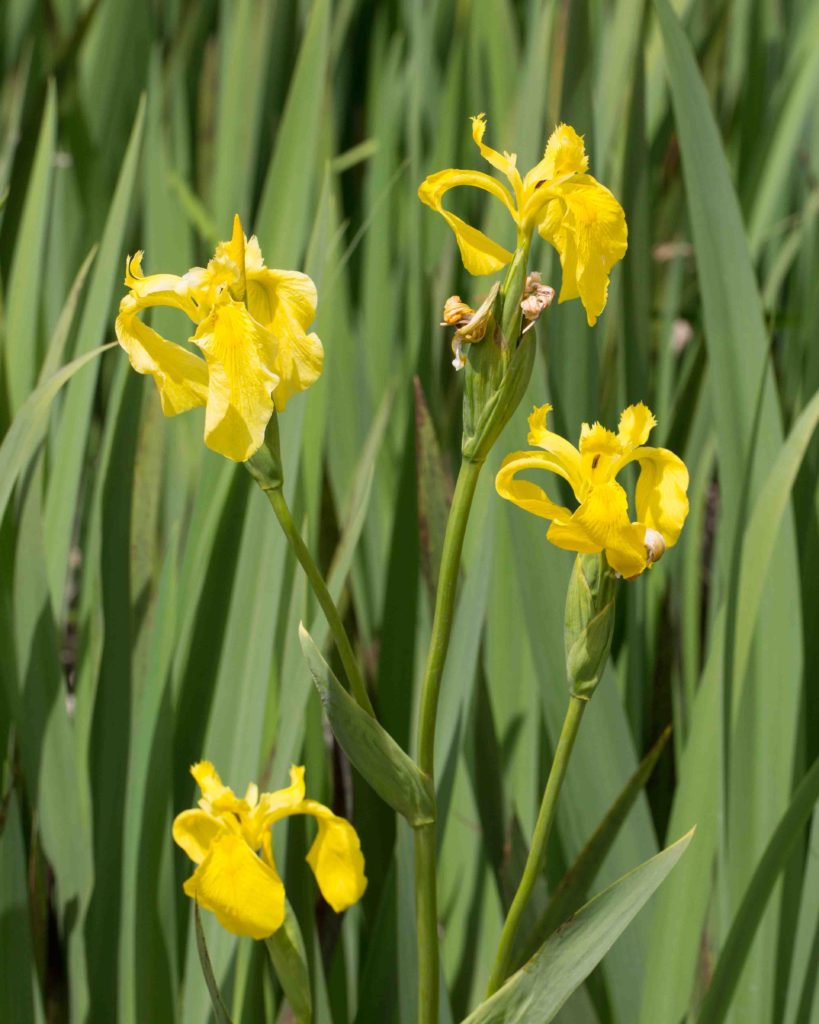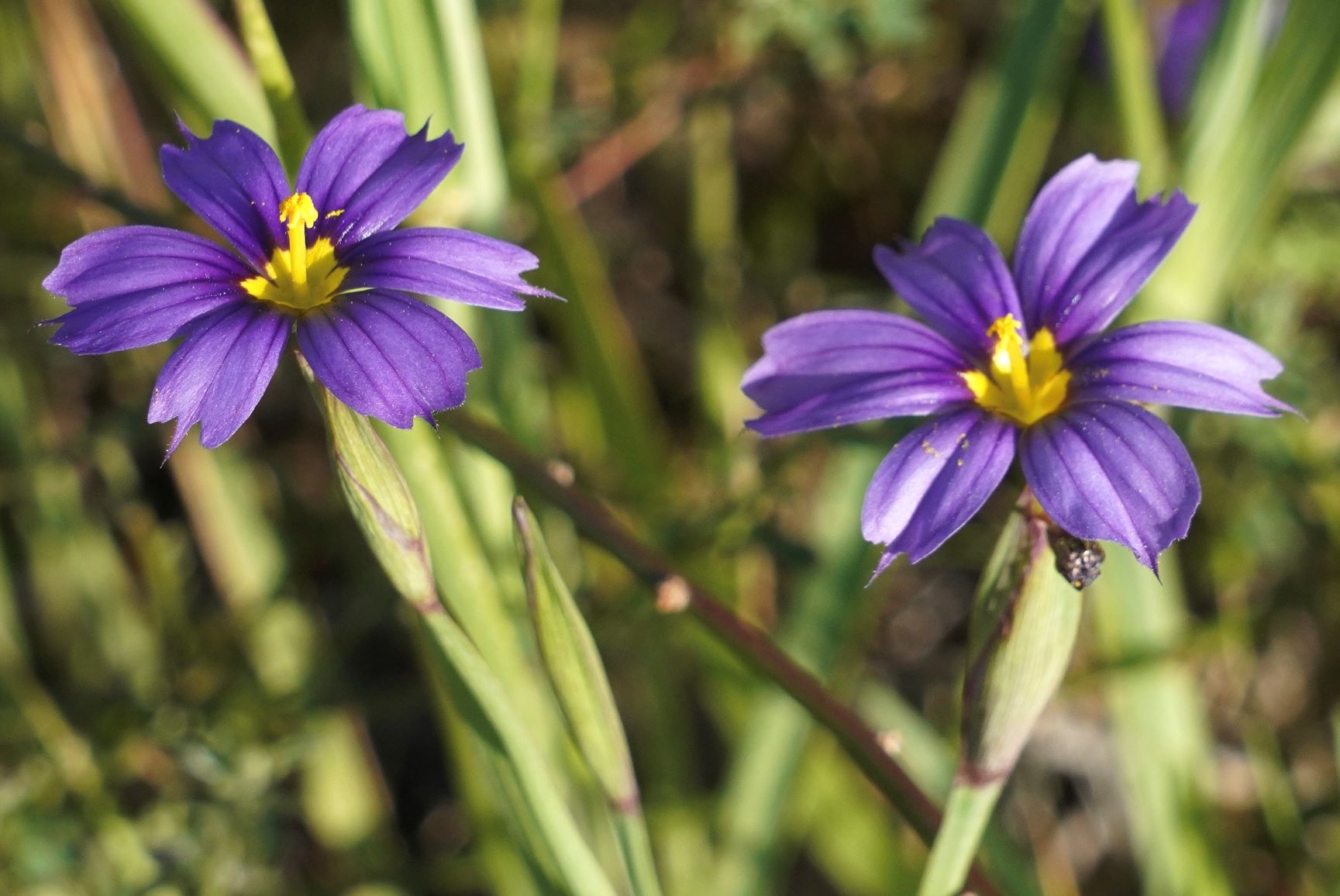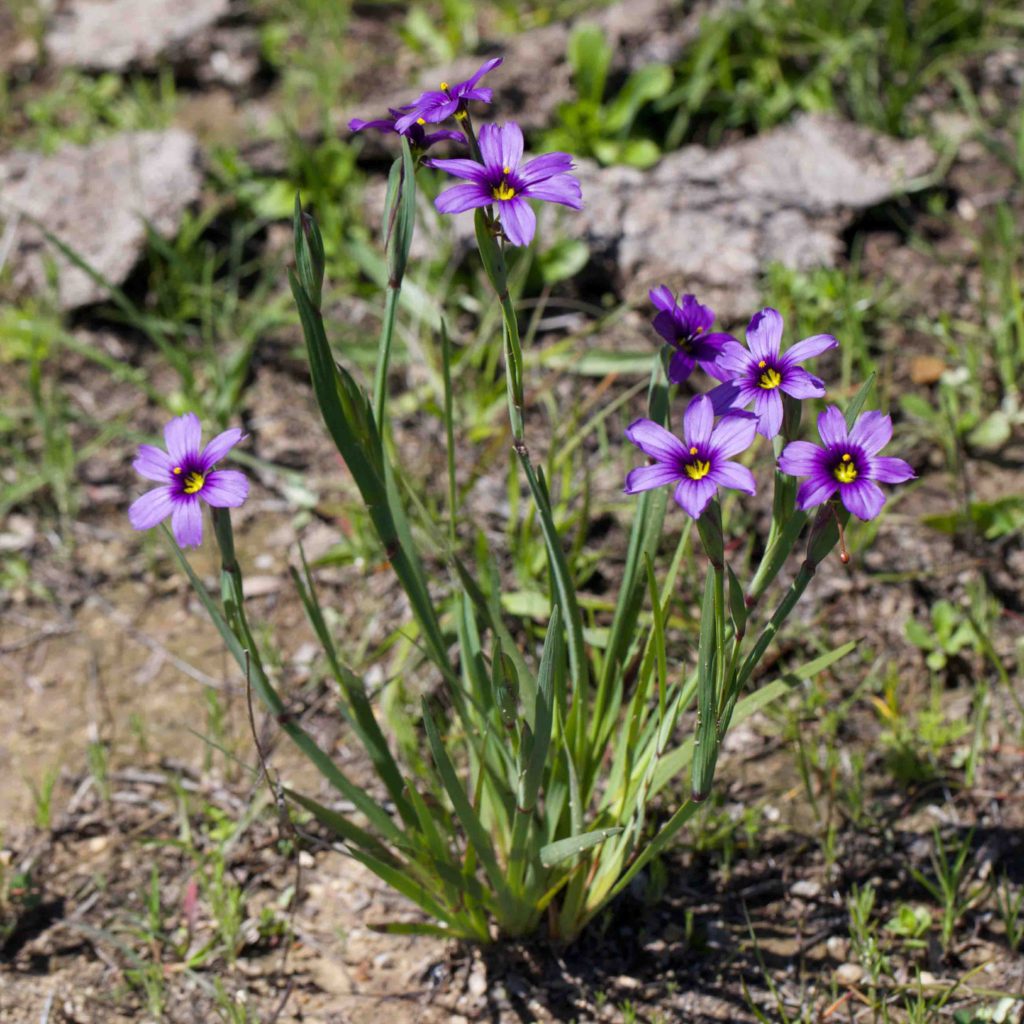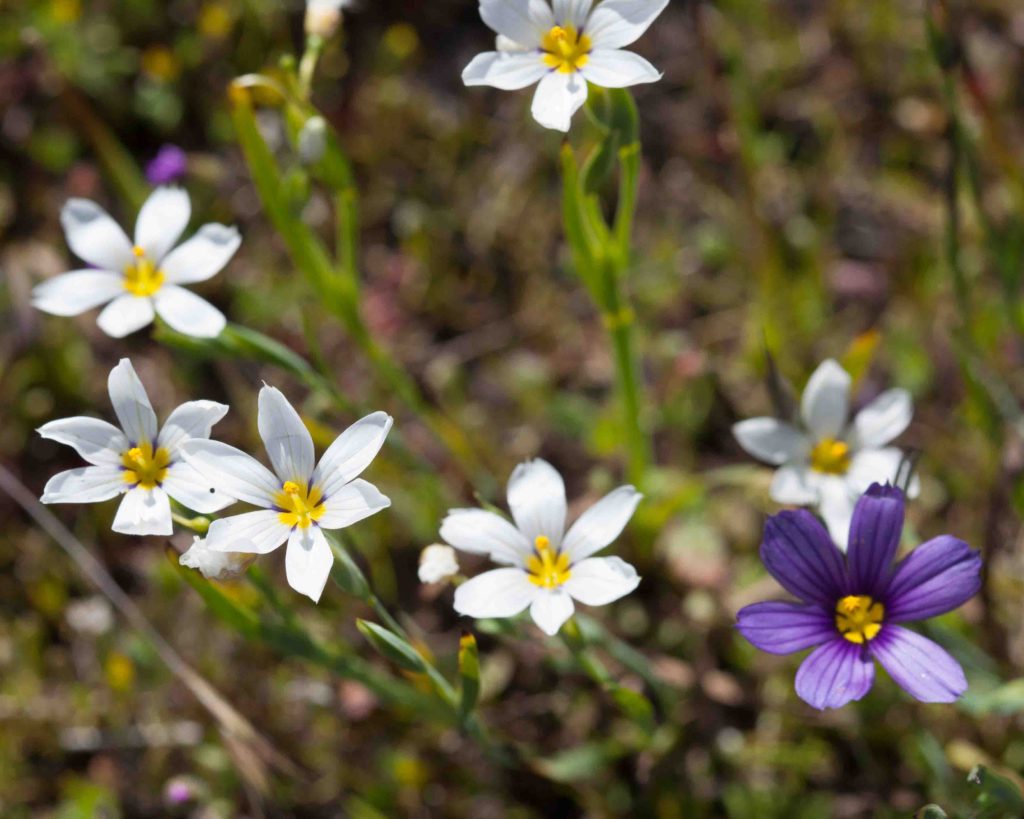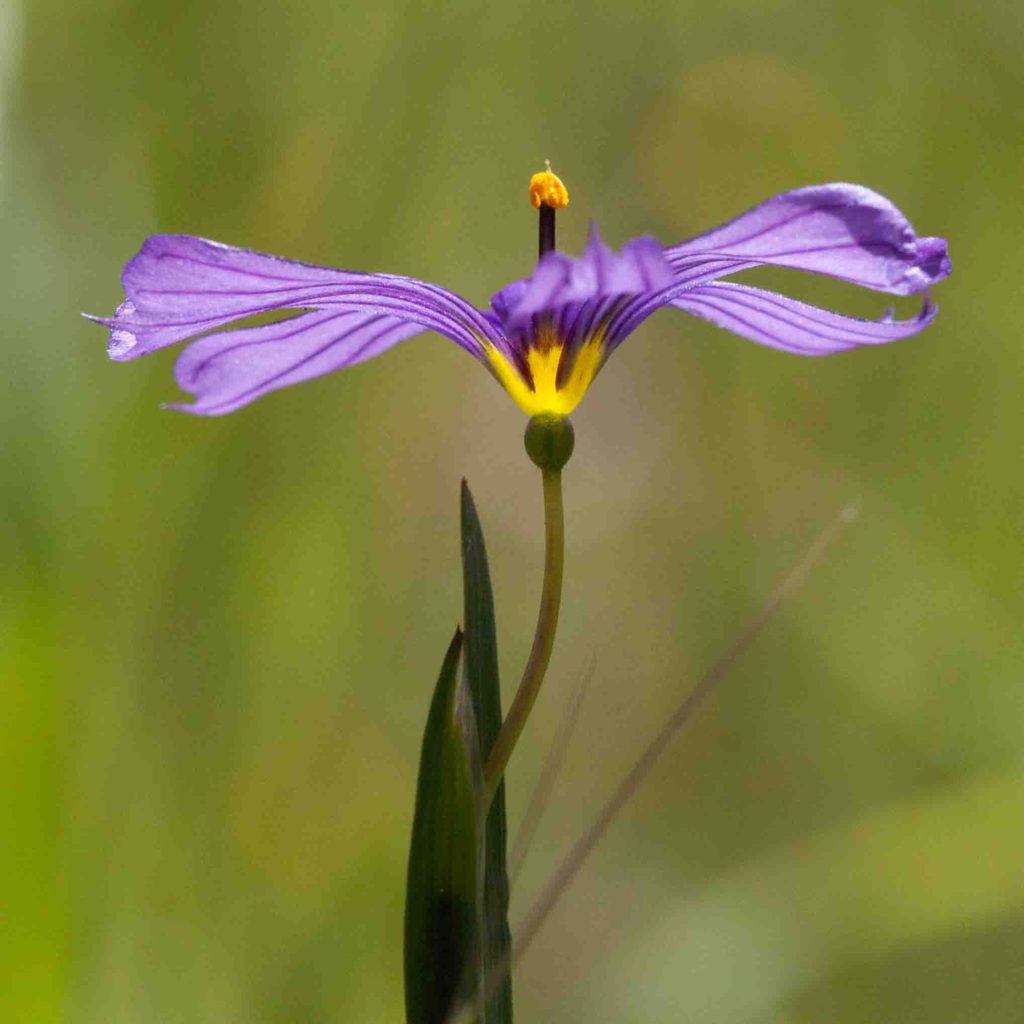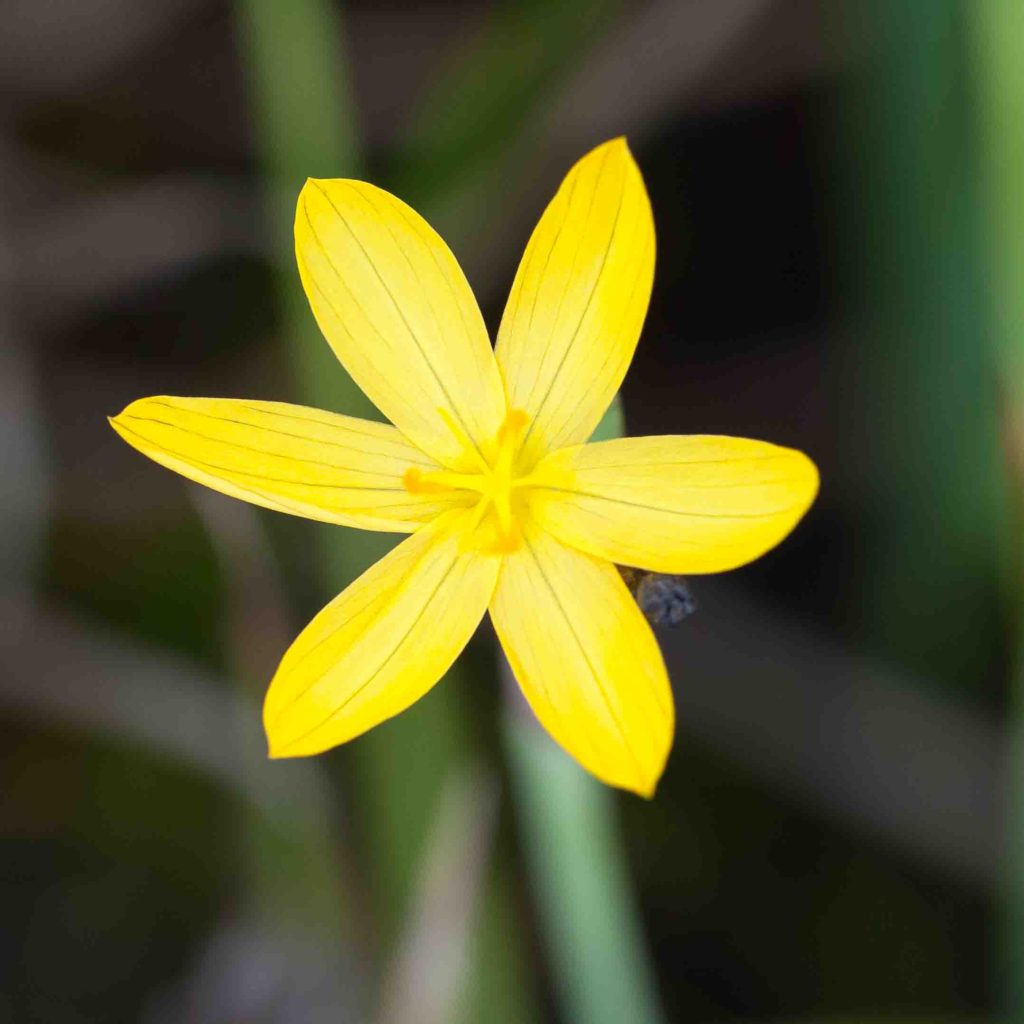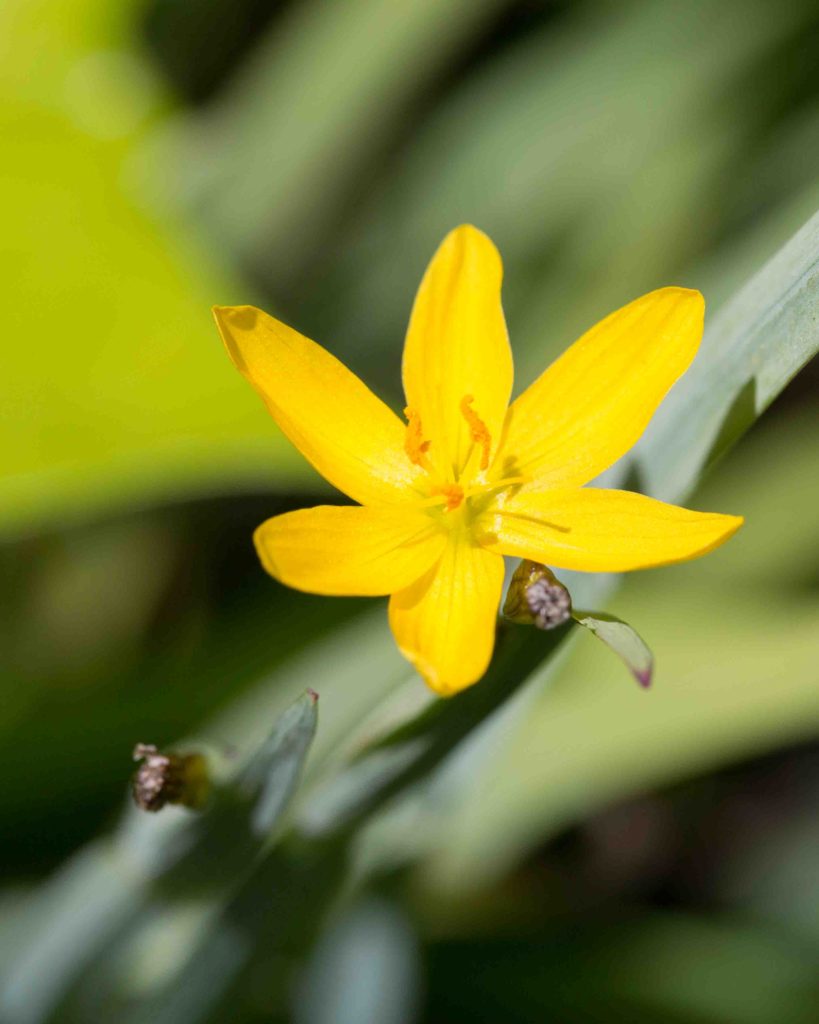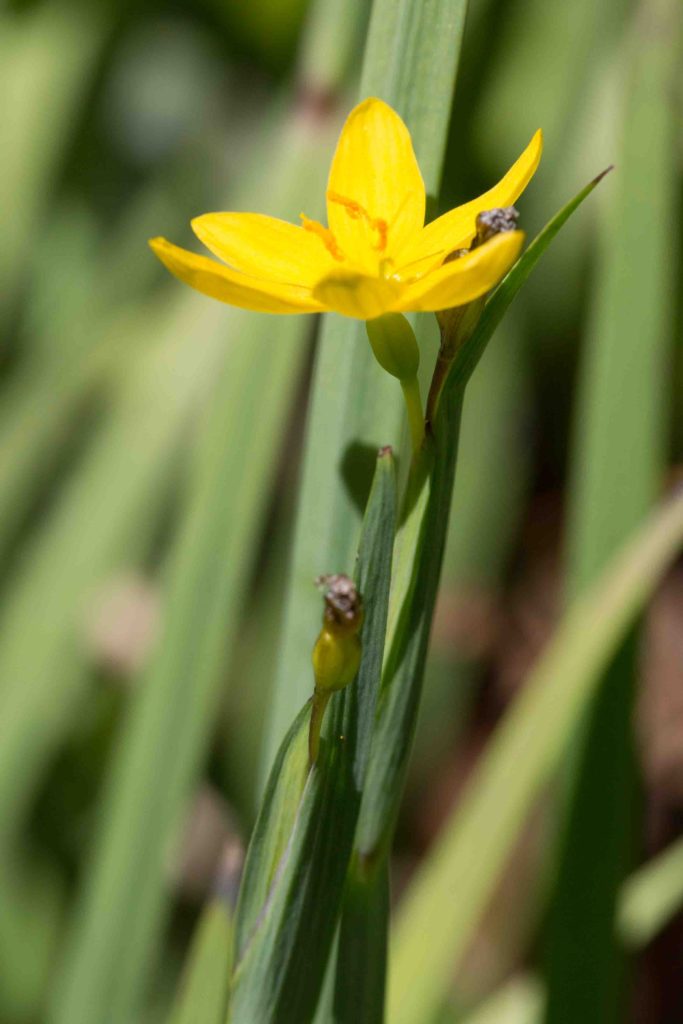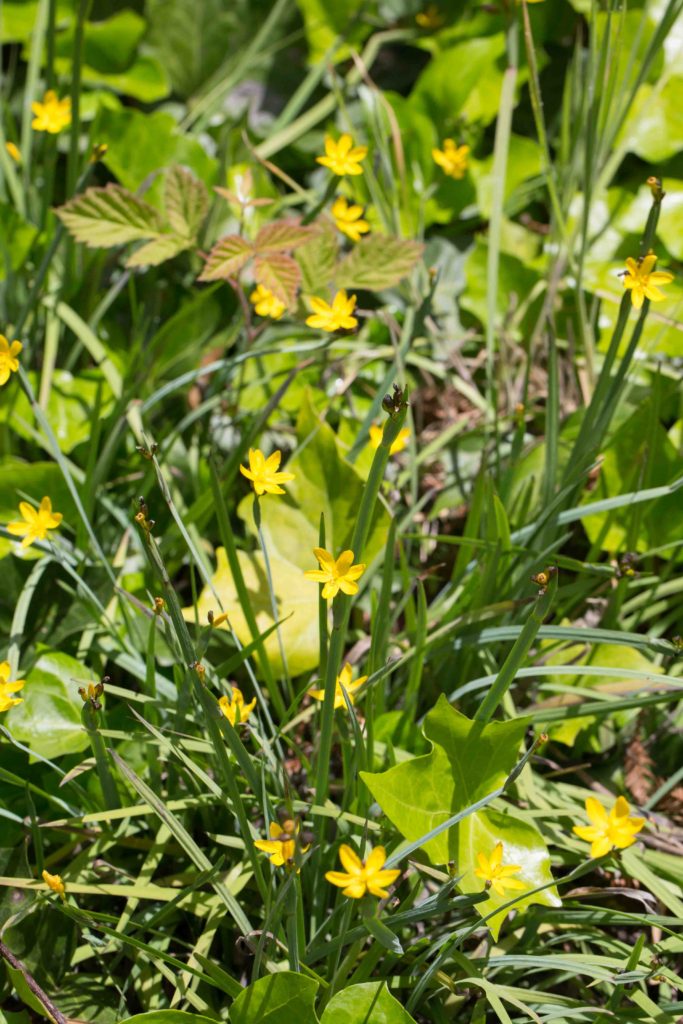Iridaceae: Iris Family
African Cornflag – Chasmanthe floribunda
Blooms:
Feb–May
Plant Height:
< 1 m
Flower Size:
Large cluster
Origin:
South Africa
Habitat:
Garden escape
Notes:
This is a dramatic plant, with a dense clump of long basal leaves and a 1–2 branched stem. The stem bears large clusters of orange-red flowers in two ranks (i.e. borne alternately on opposite sides of the stem) like a many-branched candelabra. Escaping from cultivation, this has become naturalized at Point Lobos and nearby.
Douglas Iris – Iris douglasiana
Blooms:
Mar–July
Plant Height:
15–50 cm
Flower Size:
Large
Origin:
Native
Habitat:
Woodland
Notes:
This beautiful iris is common in coastal areas. The flower is made of 3 long petal-like sepals, which are broad and down-curving; and 3 true petals, which are narrower, shorter and more erect. Above each sepal is a style branch, another petal-like structure with an upturned tip. Leaf blades are long and curving, attached edge-wise to the stem. The flower varies in color from lavender to rich blue-purple. It usually has white veins, and a yellowish patch towards the base of the sepal. Photos #1, 2 and 4 by CJH.
Yellow Flag Iris – Iris pseudacorus
Blooms:
Apr–June
Plant Height:
0.5–1.5 m
Flower Size:
Large
Origin:
Eurasia
Invasive?
Yes – limited
Habitat:
Woodland
Notes:
A typical iris in its appearance, unmistakable with its bright yellow flowers. Usually found on the edge of a pond. Photo #1 by CJH.
Rosy Sand Crocus – Romulea rosea var. australis
Blooms:
Mar–Apr
Plant Height:
< 10 cm
Flower Size:
Medium
Origin:
South Africa
Habitat:
Garden escape
Notes:
This is a garden escape, originally in the Carmel Highlands but now occasional across the Monterey Peninsula. Flowers are 15–20 mm across, with pink or lilac lobes and a yellow throat. Leaves are cylindric or elliptic in cross-section. Photos by CJH.
Blue-eyed Grass – Sisyrinchium bellum
Blooms:
Mar–May
Plant Height:
< 64 cm
Flower Size:
Small-medium
Origin:
Native
Habitat:
Open grassland
Notes:
Despite its common name, this flower is more purple than blue (occasionally white), with a vivid yellow throat. Lanceolate leaves clasp each other in true iris fashion. Purists ridicule the common name as being incorrect on all counts, preferring something like “yellow-eyed purple iris”. Photo #1 by CJH.
Golden-eyed / Yellow-eyed Grass – Sisyrinchium californicum
Blooms:
Mar–May
Plant Height:
< 62 cm
Flower Size:
Small-medium
Origin:
Native
Habitat:
Moist places near coast
Notes:
Similar in size and shape to the more common Blue-eyed Grass (Sisyrinchium bellum, see above). The flower is bright yellow with slightly darker longitudinal stripes. It has grass-like leaves and jointed stems.
